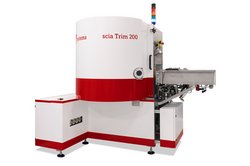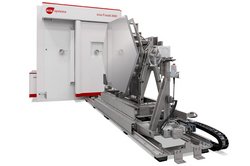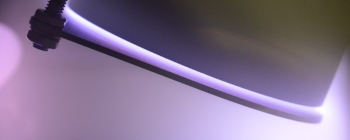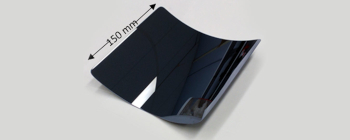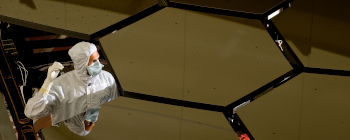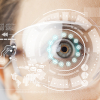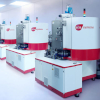The Technology of Ion Beam Figuring
Ion beam figuring (IBF) is an etching process under high vacuum conditions especially for optical substrates, like telescope mirrors. A small beam of positive charged ions is used to physically etch material from a substrate. It is also often referred to as ion beam polishing or ion beam finishing, as it is usually the last step in a series of processing steps.
A similar process carried out on wafers is called ion beam trimming.
How does it work?
Unlike mechanical polishing, IBF is a contactless process. A small beam of positive charged ions, e.g. Argon is directed to the substrate surface. The collision of the ions with the atoms of the substrate starts a "collision cascade". With an optimized process flow (adjusted energy and direction), the particles in this cascade are directed back to the substrate surface. In this way, the atoms at the end of the cascade can overcome the surface binding energy and detach from the substrate. This process works on all materials.
Before processing, the surface form errors need to be measured with an interferometer. On the basis of this surface-profile, the software of the ion beam etching system calculates an individual dwell time map for each substrate and creates a recipe for the processing.
The ion beam source is moved by an xy-axis system in a meander-shaped pattern across the substrate surface. An additional z-axis is used to control the focus of the ion beam. For smaller substrates it is also possible, to work with a static ion beam source and to move the substrate in front of the ion beam. The amount of material removal is determined by the dwell time of the ion beam. When the ion beam moves quickly over a certain point, little material is removed there. Slow scanning means higher removal.
Other influencing factors for the removal rate are the ion beam energy, ion beam current, the material of the substrate and the angle of incidence. Therefore, processing of curved substrates, requires a special solution, which considers the different impact angles of the ion beam on the substrate surface.
One way is to tilt the ion beam source with a 5-axis-system, so that the ion beam remains at a constant angle to the substrate. Another way is to include the angle of incidence in the pre-calculation of the movement profile in the system software, which is realized in our IBF systems.
Advantages of Ion beam figuring
- contactless technology, no ageing effects of commonly used mechanical polishing tools
- excellent stability of the removal rate
- no sub-surface damages on the substrate
- extremely high precision down to single nanometers
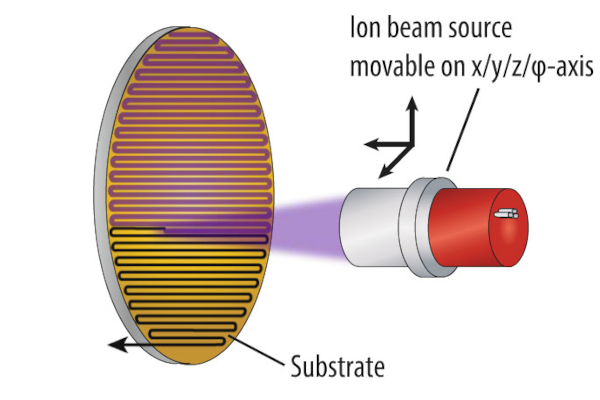
Principle of dwell time controlled Ion Beam Figuring process
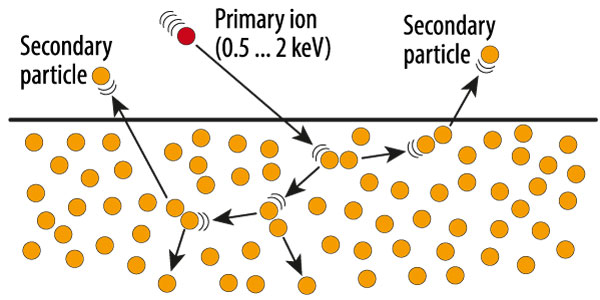
Collision cascade of atoms
Our Process Solutions
scia Trim 200
High-volume production system for film thickness correction of wafers up to 200 mm.
scia Finish 1500
Polishing error correction of high-precision optical elements up to 1500 mm dia.
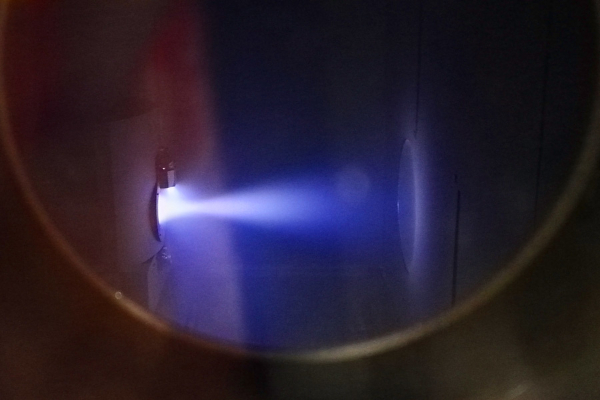
View into the process chamber of a scia Finish 1500 during the ion beam figuring process
More Information
Technology
Our range of ion beam and plasma processes for etching, coating and cleaning of substrates.
Application
In our Application Note we show you the results of mirrors treated by NASA with a scia Trim 200.
Video
Video presentation: Ion beam figuring for telescope mirrors of different sizes
Do you want to speak to one of our experts? Contact us:
scia Systems GmbH
Clemens-Winkler-Str. 6c
09116 Chemnitz
Germany
Tel: +49 371 33561-561

